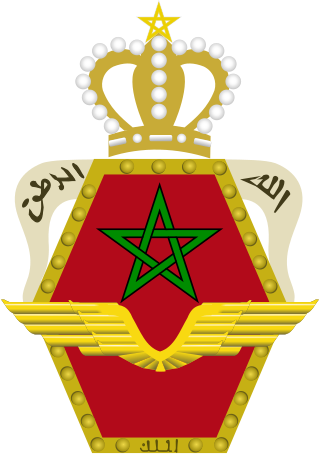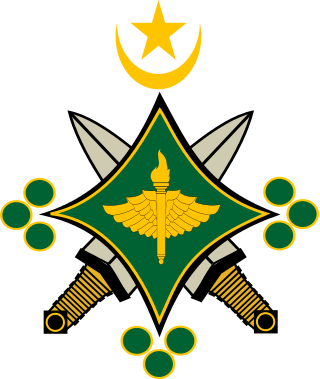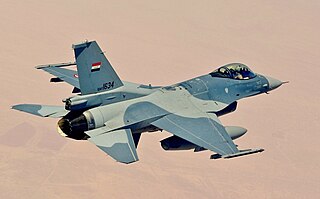
The Dassault Mirage III is a family of single/dual-seat, single-engine, fighter aircraft developed and manufactured by French aircraft company Dassault Aviation. It was the first Western European combat aircraft to exceed Mach 2 in horizontal flight, a feat which was achieved on 24 October 1958.

The SEPECAT Jaguar is an Anglo-French supersonic jet attack aircraft originally used by the British Royal Air Force and the French Air Force in the close air support and nuclear strike role. It is still in service with the Indian Air Force.

The Dassault Mirage F1 is a French fighter and attack aircraft designed and manufactured by Dassault Aviation. It was developed as a successor to the Mirage III family.

The Exocet is a French-built anti-ship missile whose various versions can be launched from surface vessels, submarines, helicopters and fixed-wing aircraft.

The Atlas Cheetah is a South African fighter aircraft designed and produced by the aviation company Atlas Aircraft Corporation. It was developed at the behest of, and principally operated by, the South African Air Force (SAAF).

The Dassault Mirage 5 is a French supersonic attack aircraft/fighter-bomber designed by Dassault Aviation during the 1960s and manufactured in France and other countries. It was derived from Dassault's popular Mirage III fighter and spawned several variants of its own, including the IAI Kfir. In Pakistan's service, the Mirage 5s are modified and are capable of nuclear weapons delivery.

The Vympel K-13 is a short-range, infrared homing air-to-air missile developed by the Soviet Union. It is similar in appearance and function to the American AIM-9B Sidewinder from which it was reverse-engineered. Although it since has been replaced by more modern missiles in frontline service, it saw widespread service in many nations.

The MolniyaR-60 is a short-range lightweight infrared homing air-to-air missile designed for use by Soviet fighter aircraft. It has been widely exported, and remains in service with the CIS and many other nations.

The Hughes AIM-4 Falcon was the first operational guided air-to-air missile of the United States Air Force. Development began in 1946; the weapon was first tested in 1949. The missile entered service with the USAF in 1956.
The BisnovatR-40 is a long-range air-to-air missile developed in the 1960s by the Soviet Union specifically for the MiG-25P interceptor, but can also be carried by the later MiG-31. It is one of the largest air-to-air missile in the world ever to go into production.

The R.550 Magic is a short-range air-to-air missile designed in 1965 by French company Matra to compete with the American AIM-9 Sidewinder, and it was made backwards compatible with the Sidewinder launch hardware.

Project ROSE was a program by the Pakistan Air Force to upgrade the avionics of its ageing Dassault Mirage III and Mirage 5 fighter jets,. These had originally been built either by Dassault Aviation in France, or by the Government Aircraft Factories (GAF) in Australia. The program, based at the Pakistan Aeronautical Complex, focused on upgrading the military avionics and onboard computer systems, with equipment supplied variously by Pakistani Margella Electronics, French SAGEM and Italian SELEX consortia.

The Matra Super 530 is a French short to medium-range air-to-air missile. The Super 530 series is an improved type of the R.530 missile.

The Royal Moroccan Air Force is the air force of the Moroccan Armed Forces.

The AS-30 was an air-to-ground missile built by Nord Aviation. It was a precision attack weapon designed to be used against high-value targets such as bridges and bunkers. The AS-30 was essentially a larger version of the earlier AS-20 design, and initially used that weapon's guidance system, which required pilots to track the weapon visually and correct its path using a small joystick, while also flying their own aircraft. All such MCLOS systems proved very difficult to use in practice. The updated AS-30L replaced this system with a semi-active laser homing system, which allows the missile to fly to the target without operator intervention. About 60 AS-30Ls were launched during Operation Desert Storm and Operation Deliberate Force with great success.

The Mauritania Islamic Air Force is the air force of the Armed Forces of Mauritania. It was established in 1960. Like many of the former French colonies, Mauritania received limited economic and military aid from France. The FAIM started out as a French-operated transport force, and has seen combat against the Polisario Front in the 1970s.

The 9th (Fighter) Squadron is a squadron of the Iraqi Air Force.



























